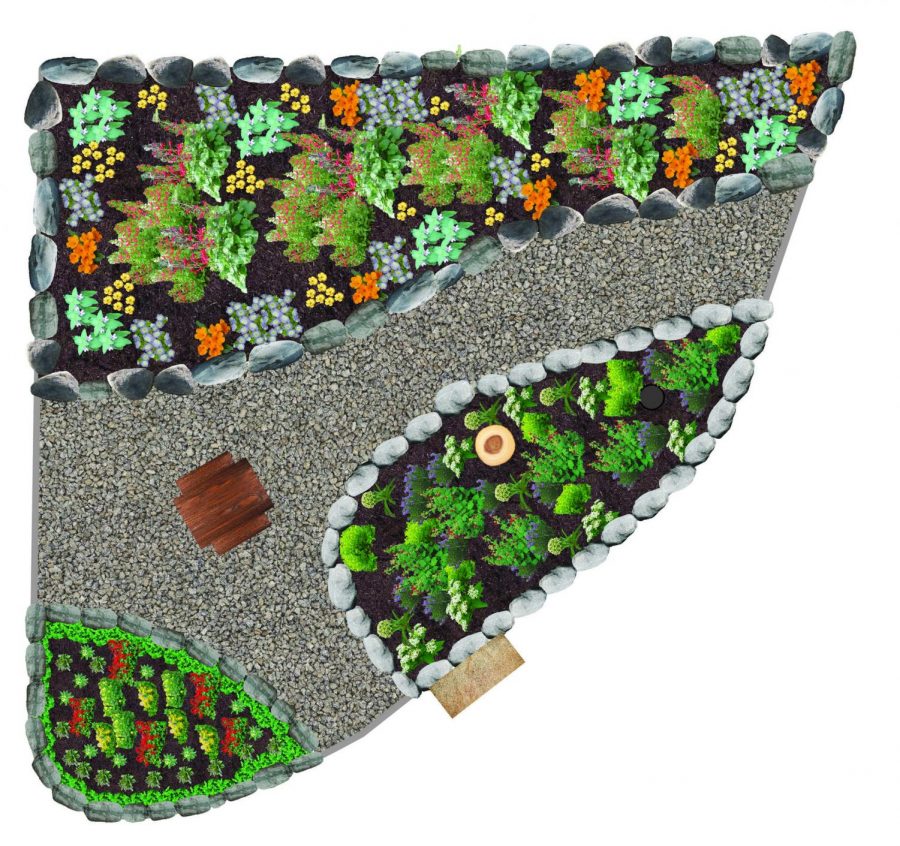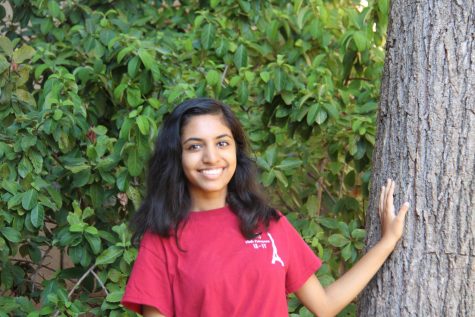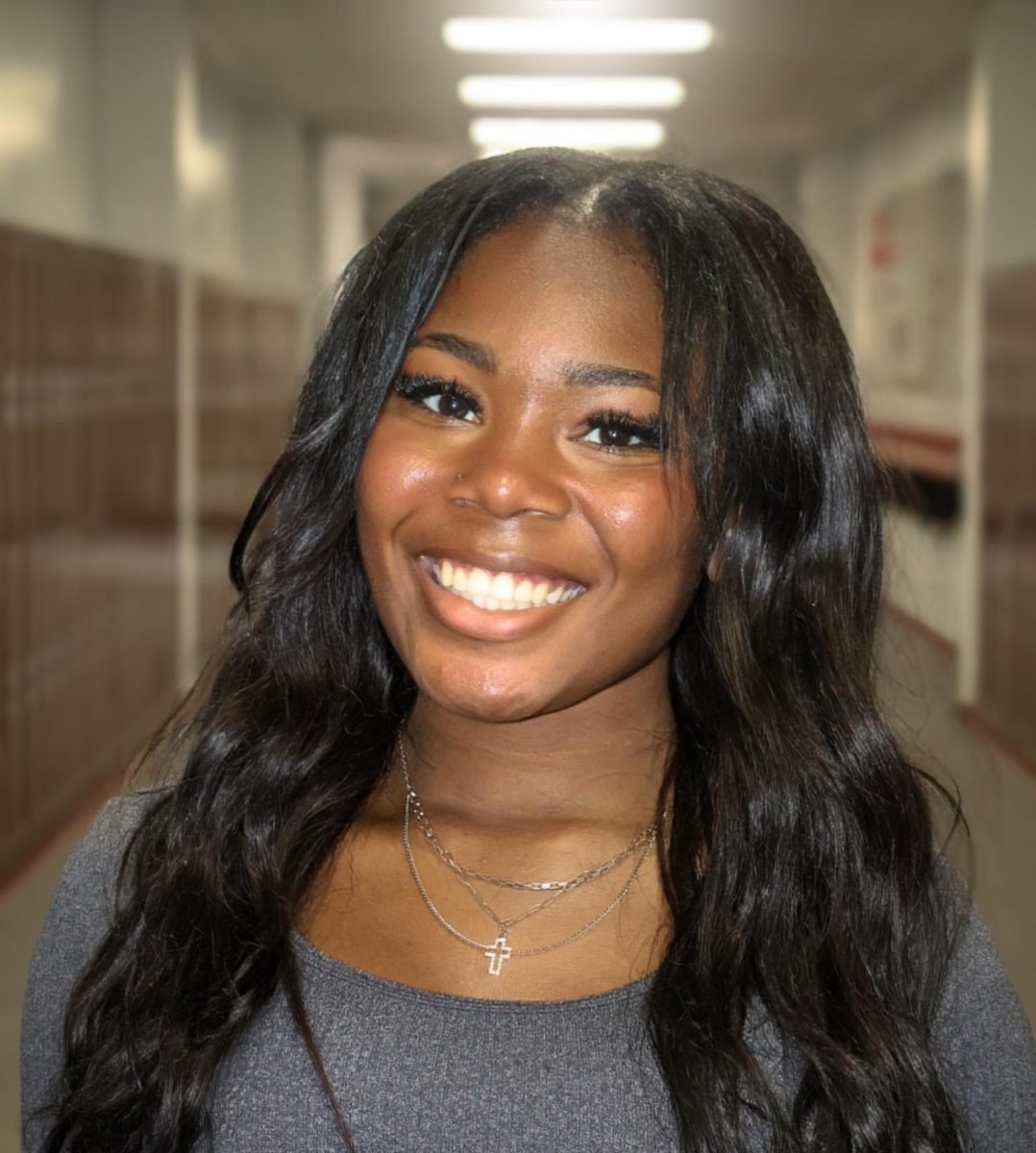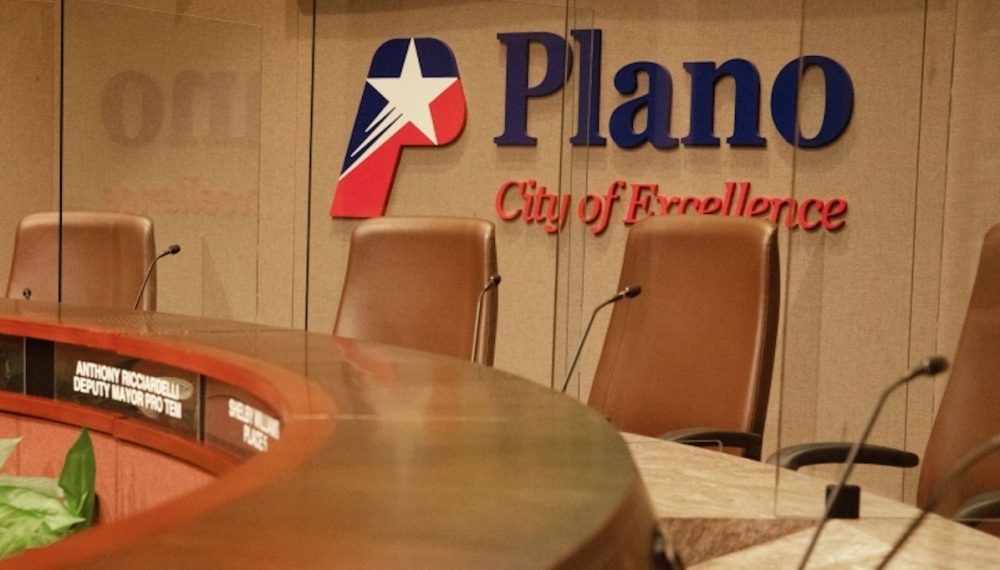AP Environmental Science Classes seek to improve campus
Aiden Shertzer and team create an artistic rendering of what their plot will look like after implementation.
February 11, 2020
The AP Environmental Science department created a semester-long landscape design project to be worked on annually in the first semester of the course, with the best ideas getting a chance to be presented in front of judges and even implemented.
“This year’s presentations were probably the best we’ve ever had,” APES teacher Mark Yoder said. “We got that comment from the judges as well, and they had a hard time deciding the winners this year.”
This year’s winners are all students from Mr. Yoder’s classes, with the usual first, second and third place being recognized as well as a special “grand prize” category for one exceptional student.
The grand prize was created for senior Grace Magavern and her blackland prairie idea. Magavern’s case is special, as she has been working with the APES department and partnering with members of NHS for her idea since Nov. 2018, as a junior. Her objective is to take out the invasive and nonnative plants, such as the King Ranch bluestem, from the softball field area of the school and replace it with native blackland prairie plant species. With the seeds officially being planted around Oct. 2019, students can expect to see growth starting late Feb. to early March, and the plants should reach full bloom in a couple years.
First place was given to seniors Luke Herrod, Meagan Taveira, Aiden Shertzer and Cody Crist, who wish to implement an oak tree garden in the plain dirt area outside the cafeteria, by the west doors. Second place went to seniors Riley Bautista, Devin Foster, Haleigh Harmon and Hayden Howe, who have plans to revamp the courtyard on the east side of D building. Finally, third place was awarded to seniors Hyman Ye, Isabel Saldivar, Jerry Cheng and junior Kyle Liu. Their idea consisted of a 3D sculpture and art garden to be located on the grass patch on the south side of the B2 building.
The main goals of the landscape design project are to teach students more about nature in a hands-on way, improve biodiversity and heighten the aesthetic appeal of the campus. During the semester students learned about a range of Texan environmental factors including climate conditions, soil compositions and native plant and animal species. Each topic discussed was put to use for the project.
“I really liked how it all built off of each other,” senior Emmy Coburn said. “It was interesting to me to not just learn something and move on from it, but what we were learning was actually going into the project.”
The hands-on approach also allowed students to get creative with their ideas and designs and have personal experiences with their surrounding environment.
“The way the project was structured was very open, so we were able to explore,” senior Jade Nguyen said. “We weren’t constricted by any limits, and we were able to enjoy our project and make it our own.”
The presentation days were Jan. 14-15, held in front of a panel of judges ranging from the APES teachers to renowned environmental specialists and experts.
“It was actually really nerve-wracking,” Coburn said. “We walked in and there were way more people than we thought there were going to be, but it went really well.”
The hard work doesn’t stop here, however. Even students that didn’t place in the top three of the landscape design presentations have been favored enough by the school or by some of the judges that their ideas are also looking to be incorporated onto the school’s landscape. The next step is deciding how to implement them and make sure they can all be sustained.
“One thing I would like to do is institutionalize the care and maintenance of the gardens, to get groups here on campus, either student or faculty, to help,” Yoder said. “If we’re gonna get more and more of these installed, we need to start taking care of them.”








